




















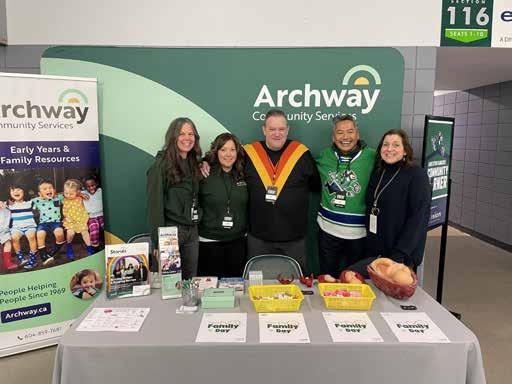
The Canucks for Kids Fund will present a $10,000 cheque to Archway Community Services during the Abbotsford Canucks game on Monday, February 17.
The donation will help the Archway Abby Dads and Family Centre programs support parents in Abbotsford.
"We’re incredibly grateful to the Abbotsford Canucks for their generous support," said Reg Unrau, supervisor of Archway’s Abby Dads program. "This donation will help us provide necessary services and support to families in Abbotsford."
The Abby Dads program supports local fathers in building healthier relationships with their families, while Archway’s Family Centre fosters the well-being of individuals and families through friendly and supportive meeting places where adults and children can share quality time together.
“This support comes at a perfect time as we celebrate Family Day in BC. We look
forward to a wonderful game and thank the Abbotsford Canucks for making this Family Day even more special," said Tania Rempel, supervisor of Archway’s Family Centre program.
“Hockey isn't just a sport – it's a tradition that brings families together, creating lasting memories on and off the ice,” said Jim Kozak, COO, Abbotsford Canucks & Abbotsford Centre. “On Family Day, there's no better way to celebrate the bonds that unite us than by supporting our local community. We look forward to gathering with the Abbotsford Canucks family on Monday and supporting these Archway programs for parents.”
The game starts at 2:00pm on Monday, February 17 at Abbotsford Centre, where the Abbotsford Canucks will play the Colorado Eagles.
Tickets for Monday’s game are available at Abbotsford.canucks.com/tickets/ singlegame.
• IV Sedations
• Implants
• PRP / PRF
• Veneers
Bo
Bonding
• Wisdom Teeth Removal
• Digital X-rays & CBCT
• Nitrous/ Laughing Gas • Invisalign



icwqr klf Kyqr dI sMsfr pRiswD
ÈKsIaq s[ jrnYl isMG afritst df dyhFq
zf[ gurivMdr isMG
pMjfbI klf aqy sfihq Kyqr dy pRymIaF leI ieh duKdfeI Kbr hY ik srdfr jrnYl isMG afritst ivCoVf dy gey hn. Auh ieMnIN idnIN pMjfb gey hoey sn, ijwQy Auh ipCly kuJ idnF qoN ibmfr sn aqy awj ieh duKdfeI Kbr imlI ik Auh sMsfrk Xfqrf pUrI kr gey hn. pirvfirk sUqrF anusfr Auh ipCly kuJ idnF qoN pRfeIvyt hspqfl cMzIgVH ivwc dfKl sn, ijwQy 10 PrvrI dI svyr nUM AuhnF nUM idl df dOrf ipaf, jo ik jfn lyvf sfbq hoieaf. ies qoN pihlF pIlIey
dI iÈkfieq kfrn Auh hspqfl dfKl hoey, ijs df ilvr qy ikznI ‘qy asr

sI, ielfj mgroN AuhnF nUM hspqfl qoN CuwtI iml geI sI aqy Gry af gey sn. pMjfb PyrI dOrfn AunF dI supqnI bIbI bljIq kOr nfl sn, jd ik puwqr qy DI kYnyzf qoN pMjfb rvfnf ho rhy hn. AuhnF df sskfr pirvfr vwloN cMzIgVH ivKy kIqf jfvygf.
jrnYl isMG afritst dI Aumr 69 sfl dI sI. Auh afpxy ipwCy supqnI, puwqr, DI aqy vwzf sfihqk pirvfr Cwz gey hn. jrnYl isMG mhfn icwqrkfr srdfr ikrpfl isMG jI dy spuwqr sn aqy AunF ny smuwcI iËMdgI sfihq aqy klf Kyqr dI byimsfl syvf kIqI. afp df jnm sMn 1956 ivKy ËIrf Èihr c hoieaf aqy afpxy ipqf ikrpfl isMG jI qoN pyNitMg df igafn hfsl kIqf. ies qoN ielfvf AuckotI dy ivÈv ividafly qoN ies sbMDI muhfrq hfsl kIqI aqy afpxI Xogqf nfl dyÈ ivdyÈ ivwc nfmxf Kwitaf. afpxf jIvn dy 40 sflF qoN vwD smF pMjfb afrt Kyqr nUM smripq kIqf. s[ jrnYl isMG ny sfnUM 2000 ivwc pirvfr smyq pwky qOr ‘qy kYnyzf itkfxf kIqf. kYnyzf ivKy pMjfbI pRYws klwb afP bIsI dy muZly mYNbrF ivwcoN sn aqy ies dy pRDfn rih cuwky sn qy awj-kwl jnrl skwqr dy ahudy ‘qy sn. ies qoN ielfvf pMjfbI lyKk mMc, vYnkUvr ivcfr mMc smyq keI sfihqk sMsQfvF dI vI afp agvfeI krdI rhy.afp srI qoN pRkfÈq huMdy hPqfvfrI pMjfbI aKbfr ‘ieMtrnYÈnl pMjfbI itRibAUn’ dy sMpfdk vI sn. icwqrkfr jrnYl isMG ny iswK ieiqhfs aqy pMjfbI swiBafcfr nfl sMbMiDq anykF icwqr bxfey. AuhnF srI dy sRI gurU isMG sBf gurduafry ivKy gdrI bfibaF

dIaF XfdgfrI qsvIrF bxfeIaF, jo ipwCy ijhy drbfr sfihb aMimRqsr siQq iswK ajfieb Gr ivKy suÈoiBq kIqIaF geIaF sn. AuhnF dIaF gurU nfnk jhfË (kfmfgftfmfrU) sbMDI bxfeIaF pyNitMgF dI kYnyzf ivwc QF QF pRdrÈnI aqy AuhnF nUM byhd siqkfr imilaf. afp dIaF afKrI pyNitMgF ivwcoN iewk ÈhId BfeI hrdIp isMG inwJr dI pyNitMg sI, jo mUl invfsI BfeIcfry dy idhfVy ‘qy irlIË kIqI geI. afpxy keI ikqfbF ilKIaF ijhnF ivwc ‘ey jrnI ivd df aYNzlYs afeI’, ‘ivÈv dy pRiswD icwqrkfr Èfhkfr’ aqy ‘pMjfbI
pyNitMgË’ afid Èfiml hn. pRiswD ilKfrI hrBjn isMG huMdl vwloN afp bfry ikqfb ‘icqrkfr jrnYl isMG’ ilKI geI
srI ivwc jrnYl isMG afritst dI jrnYl afrts akYzmI sfihiqk iekwTf df kyNdr huMdI, ijwQy vwK vwK ÈKsIaqF
afAuNdIaF aqy ivcfr sFJy krdIaF. AunF dy imlfpVy suBfa ny sfiraF dy idlF nUM joiVaf aqy bypnfh muhwbq hfsl kIqI. pMjfb qoN ielfvf kYnyzf ivwc vI AunF nUM
klf Kyqr ivwc vwzy snmfn iml cuwky sn aqy sB qoN vwzf snmfn jrnYl isMG df lok idlF ivwc siqkfr sI. afp nUM kYnyzf srkfr vwloN kuien alYËfibQ zfiemMz jublI mYzl nfl snmfinq kIqf igaf. ies qoN ielfvf vwK-vwK sMsQfvF, gdrI bfibaF dy myly aqy srI afrts kONsl vwloN vI ivÈyÈ avfrz idwqy gey. bIsI iswK kONsl, kYnyzf vwloN sMn 2001 ivwc kOmFqrI iswK kfnPrMs mOky AuhnF nUM ivÈyÈ avfrz dy ky snmfinq kIqf igaf sI. srdfr jrnYl isMG df ivCoVf drdnfk hY. vfihgurU pirvfr aqy dosqF-imwqrF nUM Bfxf mMnx df bl bKÈy!
ijmIdfr Brf ny bhuq hI vwzf kpiVaF df vyarhfAus gfhkF leI
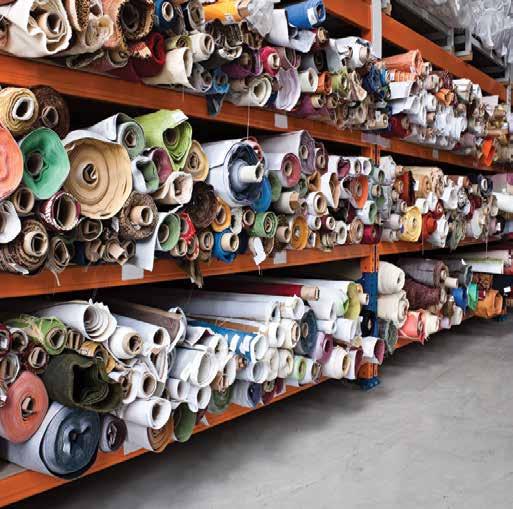

Chief Editor/Publisher : Dr. Andy Sidhu | General Manager : Dave Sidhu | Administration Executive: R onnie Sidhu
Punjabi Editor
Adver tising Executive Typist Layout Graphic Designer
Gurdeep Singh Grewal
Paramjit Singh Kanda
Ekam Banipal
Gurmeen Banipal
Gurjeet Kaur Muhar
kIqI geI jfxkfrI dI vrqoN qoN pYdf hox vflI iksy vI glqI, Buwl jF nqIijaF leI iËMmyvfr nhIN hY. ies qoN ielfvf, ivigafpn smwgrI sMpfdkI smwgrI qoN vwKrI huMdI hY, aqy ieÈiqhfrF nUM Èfml krn df














dflcInI iewk aijhf msflf hY jo gly dI KrfÈ qoN rfhq pfAux ivwc mdd kr
skdf hY. dflcInI ivwc
sfV ivroDI gux huMdy hn
jo soj aqy gly dI KrfÈ
nUM GtfAux ivwc mdd kr
skdy hn.

afnlfeIn zYsk, nvIN idwlI : gly ivwc KrfÈ
hox df mqlb hY ies smwisaf nfl lMby smyN
qwk jUJxf. awj-kwlH ieh afm smwisaf hY
jo bhuq sfry lokF nUM pRBfivq krdI hY. ieh
smwisaf keI kfrnF krky ho skdI hY, ijvyN
ik Ëukfm, KMG aqy aYlrjI.
jdoN gly ivwc KrfÈ huMdI hY qF bhuq sfry
lok zfktr kol jFdy hn aqy dvfeIaF lYNdy
hn pr quhfzI rsoeI ivwc hI gly dI KrfÈ
qoN Cutkfrf pfAux df iewk pwkf Aupfa mOjUd
hY. iesnUM isrÌ cbfAux nfl hI qusIN gly
dI KrfÈ qoN rfhq pf skdy ho. kuJ GrylU
Aupfa hn jo quhfnUM gly dI KrfÈ qoN rfhq
idvfAux ivwc mdd kr skdy hn.
guxF nfl BrpUr huMdI hY dflcInI
dflcInI iewk aijhf msflf hY jo gly dI
KrfÈ qoN rfhq pfAux ivwc mdd kr skdf
hY. dflcInI ivwc sfV ivroDI gux huMdy hn
jo soj aqy gly dI KrfÈ nUM GtfAux ivwc
mdd kr skdy hn. jykr asIN ies bfry gwl
krIey qF dflcInI ivwc aYNtIbYktIrIal gux huMdy hn jo gly ivwc bYktIrIaf nUM mfrn ivwc
mdd kr skdy hn. ies nfl quhfnUM gly dI
KrfÈ qoN bhuq rfhq imldI hY.
aYNtIvfierl guxF nfl BrpUr huMdI hY dflcInI
dflcInI ivwc aYNtIvfierl gux huMdy hn jo gly ivwc vfiers nUM mfrn ivwc mdd kr skdy hn. ieh quhfnUM vfierl ienPYkÈn nfl lVn dI qfkq idMdf hY. roËfnf dflcInI df iewk Cotf ijhf tukVf cbfAux nfl vI quhfzy srIr dI ieimAUn isstm mËbUq huMdI hY.
ies qrIky nfl dflcInI dI kro vrqo dflcInI vflI cfh bxfE : dflcInI vflI cfh bxfAux leI, dflcInI dy iewk tukVy nUM pfxI ivwc Aubflo aqy iPr iesnUM pIE. cfh bxfAuNdy smyN, Aus ivwc dflcInI df iewk Cotf ijhf tukVf pf idE. iPr iesnUM Cfx ky pIE. ies nfl quhfnUM bhuq sfry Pfiedy imldy hn. dflcInI pfAUzr bxfE : dflcInI pfAUzr bxfAux leI, dflcInI dIaF zMzIaF nUM pIs lE aqy iPr iesnUM pfxI ivwc imlf ky pIE. qusIN ies pfAUzr nUM slfd jF pfpV ‘qy pf ky vI Kf skdy ho.
afpxI Kurfk ivwc dflcInI Èfml kro : afpxI Kurfk ivwc dflcInI Èfml krn leI, afpxy Bojn ivwc bs dflcInI df iewk tukVf Èfml kro. Xfd rwKo ik dflcInI dI vrqoN krn qoN pihlF quhfnUM afpxy zfktr nfl slfh krnI cfhIdI hY, Kfs kr ky jy quhfnUM koeI ishq smwisaf hY.







The Province, in partnership with the BC First Nations Justice Council (BCFNJC), is opening six Indigenous justice centres, fulfilling a commitment to establish 15 Indigenous justice centres (IJCs) throughout B.C.
Niki Sharma, Attorney General, was joined by the BCFNJC in Kamloops to celebrate opening the six new centres in Kamloops, Williams Lake, Cranbrook, Port Hardy, Fort St. John and a shared location serving the communities of Burns Lake and Hazelton.
may vary based on the needs, strengths and services available in each community, but are initially focused on criminal defence and child protection matters.
“All Indigenous Peoples, regardless of whether they qualify for legal aid, can access free, culturally informed legal and outreach services at IJCs,” Sharma said. “I am grateful to all our partners in delivering services that help build resilient communities and improve our justice system.”

“It is incredible to reflect on what First Nations, the BC First Nations Justice Council and the Province have collaboratively achieved – a network of 15 Indigenous justice centres across B.C.,” said Kory Wilson, chair, BCFNJC. “IJCs provide Indigenous clients with optimum legal representation and access to wraparound services that extend beyond their legal needs. As those accessing our services often feel overwhelmed and disconnected from community, IJCs embrace them with care, honour their cultural identity and protect them from falling through the cracks.”
With the opening of these IJCs, the BCFNJC, the Province and Canada have completed Strategy 4 of the BC First Nations Justice Strategy. Strategy 4 is a key commitment that calls for establishing a network of 15 IJCs throughout B.C. These six new centres join the existing nine physical centres in Chilliwack, Kelowna, Merritt, Nanaimo, Prince George, Prince Rupert, Surrey, Vancouver and Victoria, along with the virtual centre serving the province remotely.
IJCs address systemic barriers faced by Indigenous Peoples in the justice system by offering culturally appropriate legal advice, representation and referrals to local support services directly to Indigenous people at the community level. The range of services and the focus in each location
The IJCs aim to help Indigenous people in the justice system address the root causes of their involvement and offer supports to help prevent future interactions with police and the justice system. Legal and outreach teams at the IJCs use their diverse community, cultural and professional expertise to support the healing and restorative-justice journeys of Indigenous clients. Through resource and support workers, clients may be referred to services such as housing, employment services, and mental-health and addictions treatment.
“Tkemlúps te Secwépemc is pleased to be the home of a brand-new Indigenous justice centre, where our communities can seek legal representation alongside wraparound services in an environment that feels culturally safe,” said Kúkpi7 (Chief) Rosanne Casimir, Tkemlúps te Secwépemc. “We extend our appreciation to the BC First Nations Justice Council and the Province for addressing and working toward better systems of justice for Indigenous Peoples. The relief, safety and support this centre brings will ripple through our community with positive effects.”
Indigenous justice centres are a key part of the Province's commitment to implement the BC First Nations Justice Strategy and advance reconciliation under the Declaration on the Rights of Indigenous Peoples Act. They are also a key action in the Province’s Safer Communities Action Plan.

A graduating class of 24 B.C. sheriffs will soon begin their careers keeping people safe at courthouses throughout the province.
Niki Sharma, Attorney General, welcomed the graduates from the Justice Institute of British Columbia’s winter class at a ceremony on Wednesday, Feb. 5, 2025. They will be assigned to work in courthouses throughout the Province, including Victoria, Nanaimo, Penticton, Oliver, Quesnel, Dawson Creek, Terrace, Fort St. John and the Lower Mainland. Without sheriffs, court matters cannot proceed. Sheriffs maintain a safe environment for everyone delivering justice services in 90 court locations throughout B.C. They are highly trained peace officers who provide protective services for the Crown, judiciary, defence, court staff, the public and all participants in the justice system. Sheriffs also protect court
users, transport accused and convicted people to and from correctional institutions, and perform other duties.
The winter class will continue training until March 6, 2025. Their first day on duty will be March 7. The next sheriff-recruit training class will start in the spring.
The BC Sheriff Service (BCSS) is recognized as an international leader in providing protective and enforcement services for the justice system. The BCSS is the oldest-law enforcement agency in B.C.
The Province is collaborating with the BCSS to enhance recruitment, retention and training. The BCSS is focusing on deployment and growth opportunities, and implementing a more-competitive pay and benefits framework for sheriffs.
People will have more affordable housing options in their communities with more than 200 supportive homes, shelter spaces, culturally supportive homes and homes for seniors opening or starting construction.
“We’re building supportive homes and shelters to help people get on a better path to living full, healthy lives,” said Ravi Kahlon, Minister of Housing and Municipal Affairs. “We’re also investing in affordable, culturally appropriate housing so more Indigenous people and seniors have a place they can call home, in the community they love. We know more needs to be done, and by speeding up building approvals and construction timelines and working with our partners, we’re helping more people find a home that meets their needs.”
In December 2024, construction began on a supportive housing project in New Westminster, which will include 52 permanent supportive homes. In Kamloops, a new shelter called Pathways is open at 142 Tranquille Rd., which includes 44 new shelter spaces. In Prince George, 42 new indoor units are open at 397 3rd Ave. These permanent homes and temporary shelter spaces will further support people at risk or experiencing homelessness in the communities.
The Province and BC Housing are working with Indigenous non-profit housing providers, First Nations and other Indigenous organiza-
tions to create new affordable and culturally appropriate homes. In Victoria, a new culturally supportive home with 15 units is available for First Nations, Inuit and Métis people who are pregnant, or have recently given birth and are at risk of homelessness. Eight Snuneymuxw First Nations families have moved into new affordable homes located on reserve at 1968-1982 Warpath Rd.
More seniors will be able to age with dignity with the supports they need in affordable homes, where they feel safe and connected. In Peachland, construction has begun on Phase II of the Peachland Seniors’ Support Society’s affordable housing residences at 4444 5th St. The building will provide 73 affordable homes for seniors in the community.
The Province will continue to enhance the delivery of supportive and complex-care housing in a manner that keeps residents and others safe. These housing projects will deliver 234 permanent homes and temporary shelter spaces in six B.C. communities.
These projects are part of the B.C. government’s $19-billion investment in homes for people and actions to drive the construction of more homes people can afford. Since 2017, the Province has more than 90,000 homes delivered or underway, with actions underway to help deliver thousands more over the next 10 years.


jy qusIN dMd lvfAuxy hn jF iPr lgvfey hn dMd purfxy hn aqy nvyN lvfAuxy hn quhfzy lvfey dMd iZqly hn jF tuwt gey hn blrfj nfl apfieMtmYNt bxfE aqy Kfxf
cMgI qrHF KfE jy quhfzy sfry dMd nhIN inkly pr Kfxf TIk qrHF nhIN Kf huMdf qF blrfj nUM imlo ieh quhfzI syvf leI srI ivwc hn.



We do all types of Renovations
• Laminate • Tiles
• Painting
• Framing
• Drywall Finishing
• Kitchen Cabinets
• Stone Works








Ayurveda
Tips for
Sleep:: afXurvyd ‘c luky hn cMgI nINd leI ieh rfË, qusIN vI aËmfE
purfxy Ëmfny ivwc, lok iewk cMgI jIvn
ÈYlI df pflx krdy hoey, sUrj zuwbx dy nfl sONdy sn aqy sUrj cVHn qoN pihlF jfgdy sn. ajoky smyN ivwc aijhI
jIvnÈYlI df pflx krnf bhuq muÈkl hY, pr jIvn ÈYlI nUM inXMqirq kIqf jf skdf hY. rfq nUM jldI sOx dI koiÈÈ kro.
nINd leI afXurvYidk suJfa cMgI nINd
qoN bfad svyry AuwT ky qfËgI mihsUs krnf iewk adBuq aihsfs huMdf hY pr ainXimq jIvn ÈYlI aqy Kfx-pIx
ivwc lfprvfhI dy kfrn awjkwlH bhuq sfry lok cMgI nINd nhIN lY pfAuNdy hn.
aijhy ‘c jykr qusIN vI rfq nUM ibsqr
‘qy afrfm nfl nINd lYx dI koiÈÈ kr
rhy ho qF afXurvyd dy kuJ nusKy quhfzy leI PfiedymMd ho skdy hn. ieMdOr
siQq aÈtFg afXurvyd kflj dy zfktr
aiKlyÈ Bfrgv ies bfry ivsQfr nfl dws rhy hn.

purfxy Ëmfny ivwc, lok iewk cMgI jIvn
ÈYlI df pflx krdy hoey, sUrj zuwbx dy nfl sONdy sn aqy sUrj cVHn qoN pihlF jfgdy sn. ajoky smyN ivwc aijhI jIvnÈYlI df pflx krnf bhuq muÈkl
hY, pr jIvn ÈYlI nUM inXMqirq kIqf jf skdf hY. rfq nUM jldI sOx dI koiÈÈ kro. rfq df Bojn
rfq nUM bhuq iËafdf crbI vfly Bojn df syvn nhIN krnf cfhIdf. Èfm 6 vjy qoN bfad Kfxf Kfx qoN prhyË kro. Bojn sOx qoN 3 GMty pihlF lYxf cfhIdf hY. rfq nUM isrP hlkf Bojn hI lਓ. rfq nUM sONdy smyN cMgf pfxI pIਓ. mobfeIl, tI[vI[ qoN dUr rho rfq nUM sOx qoN do GMty pihlF mobfeIl, lYptfp, kMipAUtr afid dI vrqoN nhIN krnI cfhIdI. ienHF ielYktRfink AupkrnF qoN inklx vflI nIlI roÈnI awKF leI bhuq hfnIkfrk hY. sOx qoN pihlF mobfeIl nUM dUr rwKxf cfhIdf hY. Kwby pfsy sOxf
afXurvyd anusfr cMgI nINd leI hmyÈf Kwby pfsy sOxf cfhIdf hY. Kwby pfsy kr ky sOx nfl CfqI ivc jln nhIN huMdI aqy pfcn sMbMDI iÈkfieqF vI dUr huMdIaF hn. ies qoN ielfvf GurfiVaF dI smwisaf vI dUr ho jFdI hY.



• Corporate Tax (T2)
•
•
• prsnl tYks
• pRoprfietr
• kOrporyt tYks
• pfrtnrisLp
• jI[aYs[tI, pI[aYs[tI & aYc[aYs[tI
• zbilAU[sI[bI[
• sI[afr[ey irvIAUjL
• ibjins plYinMg

pRoivMsLIal nOmInysLnj ienvYstr klfs pqI/pqnI spONsrisLp

nUM kOVI qy kuJ lokF nUM imwTI ikAuN lwgdI Coffee, ivigafnIaF ny lwiBaf
Koj nfl juVy romn lYNg ny ikhf ik asIN pfieaf ik BuMnx dOrfn moËfmbIEsfeIz df pwDr kfÌI Gwt jFdf hY aqy ies leI ieh kuVwqx ’c QoVHf ijhf Xogdfn pfAuNdf hY. ies nfl ieh jFc kIqI geI ik kI BuMnx qoN moËfmbIEsfeIz dy tuwtx vfly Auqpfd vI kOVy sn qy kOPI dy suafd nUM pRBfivq kr skdy hn.
pItIafeI, jrmnI : sfzy ’coN bhuq sfry afpxI svyr dI ÈurUafq kOPI nfl krdy hn. hflFik hr iksy nUM iesdf suafd psMd nhIN afAuNdf. kuJ lokF nUM ieh bhuq kOVI lwgdI hY, jdik keIaF nUM ieh iËafdf psMd huMdf hY. ivigafnIaF ny ikhf ik kOPI df suafd kOVf hY jF nhIN, ies ’c jYnyitks Xogdfn ho skdf hY. jrmnI dI tYknIkl XUnIvristI afÌ
imAUinK dy KojkrqfvF ny BuMnI hoeI aryibkf kOPI ’c kOVy imÈrxF dy iewk
nvyN smUh dI pCfx kIqI hY aqy ivÈlyÈx kIqf hY ik Auh iesdy suafd nUM ikvyN pRBfvq krdy hn. Ausny pihlI vfr ieh vI idKfieaf ik iksy ivakqI dI jYnyitk pRivrqI vI ieh inrDfrq krn ’c
BUimkf inBfAuNdI hY ik BuMny hoey pdfrQ
ikMny kOVy hn. ieh aiDaYn PUz kYimstrI jrnl ’c pRkfiÈq kIqf igaf hY. ivigafnIaF ny ikhf ik kOPI aryibkf pOdy dIaF PlIaF nUM pIx vfly pdfrQ
’c pIsx qoN pihlF suafd vDfAux leI
BuMinaf jFdf hY. kYPIn nUM lMby smyN qoN kOVf suafd mMinaf jFdf irhf hY pr
zIkYPInyitz kOPI df suafd vI kOVf ho
skdf hY. ieh drsfAuNdf hY ik BuMnI hoeI
kOPI dy kOVy suafd leI hor pdfrQ vI
iËMmyvfr hn. aryibkf bInË ’c pfieaf
jfx vflf moËfmbIEsfeIz, iewk aijhf
pdfrQ hY ijsdf suafd kYPIn nfloN 10
guxf iËafdf kOVf huMdf hY. ieh mnuwKI srIr ’c 25 kOVy suafd vfly rIsYptrF ivwcoN do tIeyaYws2afr45 qy tIeyaYws2afr46 nUM srgrm krdf hY.
Koj nfl juVy romn lYNg ny ikhf ik asIN pfieaf ik

BuMnx dOrfn moËfmbIEsfeIz df pwDr kfÌI Gwt jFdf hY aqy ies leI ieh kuVwqx ’c QoVHf ijhf Xogdfn pfAuNdf hY. ies nfl ieh jFc kIqI geI ik kI BuMnx qoN moËfmbIEsfeIz dy tuwtx vfly Auqpfd vI kOVy sn qy kOPI dy suafd nUM pRBfivq kr skdy hn. tIm ny pfieaf ik BuMnx dOrfn, moËfmbIEsfeIz swq vwK-vwK AuqpfdF ’c sV jFdf hY, jo ik BuMnx dy qfpmfn aqy imafd dy afDfr ‘qy BuMnI hoeI kOPI ’c vwK-vwK mfqrf ’c pfey jFdy
hn. sYwlF ‘qy pRXogF duafrf, swq Auqpfd moËfmbIEsfeIz dy smfn kOVy suafd rIsYptrF nUM srgrm krn leI pfey gey. AunHF ikhf ik ieh KojF sfzI smJ nUM hor zUMGf krdIaF hn ik BuMnx dI pRikiraf kOPI dy suafd nUM ikvyN pRBfvq krdI hY aqy anukUilq suafd pRoPfeIlF dy nfl kOPI dIaF iksmF ivksq krn leI nvIaF sMBfvnfvF KolHdI hY.


anykF bImfrIafˆ dy shI ielfj leI hux sfzy koloˆ nvIˆ Koj nfl iqafr kIqIafˆ dvfeIafˆ lY skogy.
* mfeIgRyn. * joVfˆ dy drd. * koeI vI aMdrUnI bImfrI. * iksy vI qrHfˆ dI ienPYkÈn. * gRihsqI jIvn sbMDI smwisafvfˆ.
* AudfsI aqy Gbrfht rog. * cmVI dy rog. * ikwl muhfsy, iÌnsIafˆ afid. * Qfierfz.
More families in Kimberley will have access to affordable, quality child care with 148 new child care spaces opening soon at Marysville Elementary school.
“This new child care centre in Kimberley will benefit hard-working families and the whole community for years to come,” said Rohini Arora, B.C.’s parliamentary secretary for child care. “It is a great example of how we are working with community partners to build new child care centres where people need them most throughout B.C.”
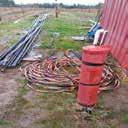
Construction of a new child care centre on school grounds was made possible by more than $8.8 million from the ChildCareBC New Spaces Fund. This fund is jointly supported by provincial investments and federal funding under the 2021-22 to 2025-26 Canada-British Columbia Canada-wide Early Learning and Child Care Agreement.
“Everyone deserves access to affordable child care close to home. These new spots in Kimberley support our children’s well-being and help meet parents’ needs,” said Jenna Sudds, federal Minister of Families, Children and Social Development. “It's a significant investment in our children’s future and the strength of our communities.”
School districts throughout B.C. are partnering with the provincial govern-
ment to create new child care spaces to help address the child care needs of families within their communities. Child care on school grounds makes life easier for families by requiring only one dropoff and pickup location, streamlining their daily routines, reducing stress and creating a smoother transition for children.
“This project certainly represents an example of what can be accomplished through exemplary community collaboration,” said Aaron Callaghan, superintendent, Rocky Mountain School District. “Our heartfelt thanks go out to everyone involved in this undertaking, including the City of Kimberley and Columbia Basin Trust. We are especially grateful to our partner, Summit Community Services Society, whose expertise and dedication will now bring this facility to life, providing essential child care services for families in Kimberley.”
Since 2018, ChildCareBC’s accelerated space creation programs have helped fund the creation of more than 40,000 new licensed child care spaces in B.C., with more than 23,000 of these operational. Funding the creation of new child care spaces is part of the Province’s ChildCareBC plan to build access to affordable, quality, inclusive child care as a core service families can rely on.

The Province has formed a new council to advance British Columbia’s interests in the long-standing softwood lumber dispute with the United States.
The council brings together leaders from the forestry sector and labour, alongside experts on U.S. relations and officials from the B.C. government.
The B.C. Softwood Lumber Advisory Council convened its first meeting on Jan. 30, 2025, and will meet regularly. It advises the Minister of Forests on the dispute, including the sixth administrative review, providing recommendations on steps B.C. can take to eliminate the 14.4% softwood lumber duties. The council will also help the Province advocate to the federal government as these duties continue to take their toll on B.C.’s forestry sector.
“The U.S. has imposed unjustified softwood lumber duties on Canada for years, and we anticipate that they will likely double before the end of this year,” said Ravi Parmar, Minister of Forests. “Bringing this team together, I am ready to throw the full weight of B.C. in the ring to fight these duties. We are going to defend the hardworking forestry workers of B.C. from these unfair duties.”
Parmar will chair the council with a focus on diplomatic and trade strategy and measures to fight for B.C.’s interests in the softwood lumber dispute with the U.S. Council members are:
Harry Bains, former minister of labour, Government of B.C.
Dan Battistella, former president, Interior Lumber Manufacturers’ Association
Linda Coady, former president and CEO, BC Council of Forest Industries
Geoff Dawe, national president, Public and Private Workers of Canada
Rick Doman, chairman, Boreal Carbon Corporation and former forestry executive
Scott Lunny, western director, United Steelworkers
Gavin McGarrigle, western regional director, Unifor
Ric Slaco, former vice-president and chief forester, Interfor
Dallas Smith, president and CEO, Nanwakolas Council
“The U.S. forest industry alleges that Canadian softwood lumber is subsidized and companies sell in the U.S. at below-market prices,” Parmar said. “This is wrong; these allegations couldn’t be farther from the truth. We’ve been very clear that we’re happy to come to the table, but that can’t happen if the U.S. industry isn’t willing to negotiate.”
Although this dispute with the U.S. goes back decades, this most recent iteration of the dispute follows the expiry of the Softwood Lumber Agreement in 2015. At the request of the U.S. lumber industry, the U.S. imposed duties on Canadian softwood lumber, starting in 2017. The B.C. government has worked with the Government of Canada to pursue claims through all available avenues, including under the North American Free Trade Agreement, the Canada-U.S.-Mexico Agreement, the World Trade Organization and the U.S. Court of International Trade.
Past dispute settlement panels have consistently ruled in Canada’s favour in the ongoing softwood lumber dispute, determining that B.C.’s forest policies are compliant with international agreements.






kuafltI bOzI aqy pyNt rIpyar syvfvF
Prym vrk aqy XUnIbOzI rIpyars
pUrIaF pYNt jObs
(sOilzs, mYtfolks, trfeIkots, kuaYzkots)
afeI.sI.bI.sI klym aqy prfeIvyt klym hYNnzlz promptlI
muPq aYstImyts
kstm pyNt
kmplIt rIstorysLn
kstm kfr afzIE/ vIzIE
sfrIaF puKqF syvfvF
ijLMdgI Br leI ilKqI grMtI
smrwQ aqy dosqfnf syvfvF
OPEN MONDAY TO FRIDAY 8 AM TO 6PM & SATURDAY 9AM TO 1 PM

Are you looking to expand your reach and connect with more customers? Advertise with The Patrika on our popular social media platforms!
Wide Reach: Tap into our growing audience on Facebook, Instagram, and our website.
Engaging Content: Your ads will be seen alongside our top stories and engaging content.
Targeted Campaigns: Tailor your message to reach your ideal customers. What We Offer:
Facebook Ads: Connect with our active community and drive traffic to your business.
Instagram Promotions: Capture attention with visually stunning ads. Website Banners: Get prominent placement on our high-traffic website.
Sign up now and get a 20% discount on your first month of advertising! Ready to boost your business? Contact us today to get started!
Phone: 604-852-2288
E-mail: Ronnie@patrika.ca www.patrika.ca
Facebook: The Patrika
Instagram: thepatrikamedia
The Patrika
afkfÈdIp kOr
Auwpr dwsy gey itps dy nfl srdIaF dy mOsm ivc ÉuÈk cmVI bfry icMqf krn dI loV nhIN hY. cmVI nUM ishqmMd aqy cmkdfr bxfAux aqy cmVI dI ÉuÈkI nUM dUr krn leI ieh ËrUrI itps kMm afAuxgy.
guxguxy pfxI dI vrqoN srdIaF ivc grm Èfvr lYxf iks nUM psMd nhIN huMdf pr grm pfxI cmVI dy kudrqI qyl nUM nÈt kr idMdf hY, ijs kfrn ÉuÈkI vwD jFdI hY. jo lok nhfAux qoN qurMq bfad cmVI nUM nmI nhIN idMdy, AunHF nUM bhuq jld cIr aqy srdI cMbl
pYdf ho jFdf hY. ies leI mfihr kosy
pfxI dI vrqoN krn dI slfh idMdy hn.
kosy pfxI nfl nhfAux qoN bfad, ichry
’qy kudrqI hfeIzRyitMg pdfrQF vflf
koeI vDIaf nmI vflf mfiescrfeIËr lgfAuxf cfhIdf hY.
snskRIn lgfE
bhuq sfry lok socdy hn ik srdIaF dy mOsm ivc snskRIn dI koeI loV nhIN hY, pr XUvI ikrnF cmVI leI EnIaF hI nuksfndyh huMdIaF hn ijMnIaF grmIaF ’c huMdIaF hn. ies leI sfnUM afpxI cmVI nUM ikrnF dy nuksfndyh pRBfvF qoN bcfAux leI snskRIn dI vrqoN krnI
cfhIdI hY.
afXUrvYidk AuqpfdF dI vrqoN
srdIaF dy pUry mOsm ivc cmVI dI komlqf bxfeI rwKx leI rsfiexk pdfrQF dI vrqoN Gwt qoN Gwt kro. nYcurl cIËF nfl ichrf Dovo. Aus qoN bfad hlkf muafiescrfeIËr qy snskRIn lgfE aqy
rfq nUM vI muafiescrfeIËr lgfAuxf cfhIdf hY. aijhf krn nfÜ quhfzI sikn hor vI ÉUbsUrq hovygI.
afpxy pYrF df rwKo iÉafl

srdIaF dy mOsm ivc cmVI dy nfl-nfl pYrF dI nmI vI Gwt jFdI hY ijs kfrn awzIaF Ptx lwgdIaF hn aqy pYr gMdy lwgdy hn. ies dy leI kudrqI qyl vflI PrUt krIm dI vrqoN krnI cfhIdI hY. nfl hI zYwz sikn nUM htfAux leI afpxy pYrF nUM rgVo. aijhf krn nfl quhfzIaF pYrF dIaF awzIaF nhIN PtxgIaF. mOsmI PlF qy
sbËIaF df syvn
bfhrI cmVI dI dyK-Bfl qoN ielfvf afpxI Éurfk df iDafn rwKxf vI ËrUrI hY. aYNtIafksIzYNts nfl BrpUr mOsmI Pl qy sbËIaF (ijvyN ik stRfbyrI, sMqrf, aMgUr, Puwl goBI, pflk, gfjr, hry mtr, afid) Kfx nfl srIr ivc PRI rYzIkls nUM htfAux qy TMZy mOsm ivc cmVI nUM suMdr rwKx ivc mdd imldI hY. (mwCI, aMzy qy bdfm) vrgy hor Bojn vI cmVI leI bhuq PfiedymMd huMdy hn. ies qoN ielfvf srIr nUM hfeIzRyt rwKx leI ÉUb pfxI pIE. ies nfl sfzI sikn hor vI ÉUbsUrq idKygI.
Auwpr dwsy gey itps dy nfl srdIaF dy mOsm ivc ÉuÈk cmVI bfry icMqf krn dI loV nhIN hY. cmVI nUM ishqmMd aqy cmkdfr bxfAux aqy cmVI dI ÉuÈkI nUM dUr krn leI ieh ËrUrI itps kMm afAuxgy. nfl hI, sfnUM ieh Xfd rwKxf cfhIdf hY ik sMquilq Éurfk aqy ksrq dI mdd nfl afm ishq df iDafn rwKxf ËrUrI hY. ikAuNik cMgI ishq dI Jlk cmVI ivc nËr afAuNdI hY.

When looking for a new house, many of us focus on theinterior features of a property, like a stunning kitchen or exposed brick walls in the living room. But finding a place that will make you and your family happy for years to come is also about the community you’ll be living in.
Here are some features to look for in your new neighbourhood:
Pedestrian friendly. Pedestrian-only spaces and walkways foster safer environments for everyone by reducing traffic congestion and providing areas for children to play. A community designed with
pedestrians in mind also encourages a healthier, greener lifestyle that prioritizes walking over driving.
Front porch living. Homes with accessible front porches can let you spend more time outside and get to know your neighbours. This simple feature promotes a friendly, inviting atmosphere where people connect casually and build relationships over time.
Access to the core. Proximity to the city centre is another factor that may affect your daily life. Being close to downtown offers convenience, reduces commute times and provides easy access to work,
entertainment and services.
Green spaces. Access to green spaces such as parks and trails is essential for your physical and mental well-being. These areas mean more space for outdoor activities, relaxation and community events.
Builders of new homes and thoughtfully planned developments like Alpine

If you’re searching for your dream home and neighbourhood, safety is likely one of your top priorities. But while most buyers focus on security systems and local crime rates, the materials and design of a house each play an equally important role in keeping you and your family safe.
Here are three often overlooked safety features to consider when house hunting: Rear-facing garages. Homes with garages located at the back of the property help reduce traffic on front streets, making the area safer for pedestrians and kids playing outside. By routing cars to laneways, these designs create quieter, less congested
streets that can give parents peace of mind and create more walkable communities.
Front porches. Front porches do more than add curb appeal, they encourage social interaction among your neighbours and a more connected community. Knowing there are friendly faces sitting on their front porches helps build a sense of safety.
Fire-resistant siding. When it comes to building materials, stucco or Hardie plank siding both offer an added layer of safety. These durable materials are fire resistant, reducing the likelihood that your home will catch fire. In areas prone to wildfires or extreme heat, stucco or Hardie siding
can provide priceless protection, potentially saving lives and reducing property damage.
As you search for your perfect home, keep in mind how design can contribute to a safer investment. New, thoughtfully planned communities like Alpine Park, apply these and other safety features from the start, and are a great option for families.
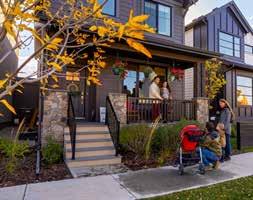
A beautiful front porch welcomes you home, invites visitors in and can be a relaxing spot to spend time reading or people watching. But our unpredictable weather makes it hard to keep up a stylish look year-round. Here are some ideas you can try:
Durable furniture. Start with good-quality furniture designed for the outdoors—opt for weather-resistant materials like teak or wrought iron, which can withstand both snow and rain. Add cozy touches with outdoor cushions and throws made from water-resistant fabrics. Even better, an outdoor storage bench is the perfect
weatherproofing solution to protect upholstered cushions from the elements.
The right plants. In the summer, embrace the warmer temperatures and create a beautiful space with potted plants like hardy perennials, including hostas, peonies and coneflowers that thrive in Canadian climates. Hanging baskets can also brighten up a front porch, and your roof will offer some protection from hail, rain damage and direct sunlight.
Quality lighting. Add warmth to your porch with sustainable lighting, such as solar-powered lanterns or Edison
bulb string lights. Consider spending a little more to purchase resilient, weatherproof lights that are built to withstand outdoor conditions.
If you’re in the market for a new home this spring, a cozy front porch, like those featured in new community developments like Alpine Parkcan add curb appeal and make the place feel more like home, sooner.
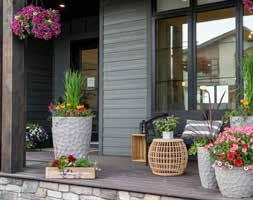

What do renting an apartment, financing a vehicle and getting approved for a credit card all have in common? Your credit score plays an important role in all three.
Your credit score represents an assessment of your ability to repay borrowed money or fulfill financial obligations. The score itself — a three-digit number between 300 and 900 — is based on your credit history. Here are some tips to keep in mind:
Start by knowing your number. Learning your own credit score is called a “soft” check and doesn’t have any negative impact on the score itself.
If you have a credit card, pay it off monthly. Paying your bill in full and on time each month helps build your credit history in the long run. A good tip is to only use your credit card for purchases you know you can pay off to avoid going into debt.
Pay bills when they’re due. This applies to car payments, hydro or your cellphone, for example. It can help establish a track record of being a reliable borrower. If it is challenging to remember your due dates, consider setting up pre-authorized payments or creating calendar alerts to remind you.
Catch up on missed payments. If you do miss a payment, try to commit to
getting caught up as soon as possible.
Keep tabs on your overall debt load. Mortgage debt, personal loans and credit card balances can easily add up. Monitor your total debt to ensure it doesn’t become unmanageable for you.
Remember, it’s important to regularly check your credit score. To help make this easier, some banks like TD allow customers who use their app to check their credit scores for free.

Many parents today believe their children will face greater financial challenges in life than they did, especially when it comes to achieving major milestones like buying a home or retiring. One way to help set your kids up for success is by talking about money and teaching them good financial habits early.
“By fostering an open dialogue about finances, parents are not just teaching their kids about saving and budgeting, they’re helping them to build a more secure financial future,” explains Emily Ross, vice president of everyday advice at TD.
Here are some tips to get started:
Create age-specific finance goals. Tweens and teens can work towards a bigger purchase, like a new laptop or special activity. Younger kids can save birthday money for a toy or learn about saving money at the grocery store by comparing prices of items.
Provide an allowance. Consider starting with a small amount, and chat with parents who have kids of a similar age to see what they’re giving. You can consider connecting the allowance to completing chores like setting the table or vacuuming.
Take your child along on bank visits. If you’re looking to start your child’s saving journey or have a teen who’s
ready to take the next step towards their financial goals, you can speak with a personal banker at your branch.
Check out online resources. There are online resources and games that can help build financial literacy at home for kids as young as three years old up until the age of 18.

Develop a budget together. Look for money management tools. For example,TD has MySpend, which can help teenagers who have a
work towards their saving goals.
Tax season comes around every year, but it can still manage to catch many of us by surprise. In fact, according to a recent survey, less than a third of Canadians feel confident in knowing when to contribute to a Registered Retirement Savings Plan (RRSP) versus a Tax-free savings account (TFSA). Fortunately, there are some steps you can take to feel more prepared.
“It’s no secret that people are feeling the impact of the current economic climate, and that’s why it’s more important than ever to seek trusted advice,” explains Pat Giles, vice president of saving and investing at TD. “Having the right financial support can make a significant difference when it comes to planning for both shortand long-term financial goals.”
also develop a plan suited to your financial goals and show you how to start making smart investments.
Speaking with a personal banker or financial advisor can help you understand the different savings options available, and their benefits come tax time. They can
This type of one-on-one guidance can assist those who believe they aren’t saving enough to reach their long-term financial goals, which is over half the country, according to a recent survey.
Remember, setting a financial plan doesn’t require a large amount to start; it’s about
cultivating a habit of investing and sticking to it. A personal banker can help you build it based on your unique needs and how much you want to contribute. No amount is too small to start saving or investing.
Learn more about having the right financial support at td.com.




PLANNING SERVICES
604-864-5510 planning-info@abbotsford.ca
kfAuNisl slfhkfr kmytI ibnYkfrF leI kfl kr

hfrmonI iewk ikPfieqI tfAUnhfAUs izvYlpmYNt hY aqy istI afÌ aYbtsPorz iewk iqMn bYwzrUm, do bfQrUm tfAUnhfAUs aqy iewk bysmYNt Poar aqy iewk vwKry stUzIਓ rYNtl sUt KrIdx leI arËIaF svIkfr krygf. ies XUint dI kImq mulFkx kIqy bfËfr muwl ($820,000) qoN 20% Gwt hY aqy $656,000 leI AuplbD hY.
sMBfvI KrIddfrF nUM hyT ilKI jfxkfrI pRdfn krnI cfhIdI hY:
pRdriÈq kro ik Auh aYbtsPorz ivwc Gwto-Gwt 12 mhIinaF qoN rhy hn jF aYbtsPorz ivwc Gwto-Gwt 6 mhIny (35 GMty pRqI hÌqy) leI pUry smyN leI kMm krdy hn.
Audfhrn: do ibwl pRdfn kro (iewk mOjUdf, iewk jo iewk sfl purfxf hY) jF do qnKfh stwb (iewk mOjUdf, iewk jo 6 mhIny purfxf hY).
pRdriÈq kro ik Auh mOrtgyj jF svY-ivwq leI pihlF qoN pRvfinq hn.
Audfhrn: iksy ivwqI sMsQf qoN pUrv-pRvfngI pwqr/dsqfvyË jF svY-ivwq df sbUq pRdfn kro.
AuhnF dI kuwl pirvfrk afmdn df pRdrÈn kro. aYbtsPorz ($109,000) leI mwDmfn qoN Gwt ibnYkfrF nUM qrjIh idwqI jfvygI.
Audfhrn: AuhnF sfry pirvfrk mYNbrF leI sB qoN qfËf tYks sfl (2024) leI mulFkx df kYnyzf rYvyinAU eyjMsI noits pRdfn kro jo Gr ivwc rihxgy, afmdn kmfAuxgy, aqy/jF mOrgyj (pqI/pqnI, bwcy, mfpy, BYx-Brf).
ies gwl df sbUq ik Auh iksy hor jfiedfd dy mflk nhIN hn.
Audfhrn: iewk notrfeIËz, hsqfKirq GoÈxf pRdfn kro.
sMBfvI KrIddfr somvfr 10 PrvrI nUM svyry 9 vjy planning-info@abbotsford.ca. 'qy eImyl rfhIN sfry dsqfvyË muhweIaf krvf skdy hn.
ielYktRfink qrIky nfl jmHF krvfeIaF pUrIaF arËIaF 'qy pihlF afE-pihlF pfE dy afDfr 'qy kfrvfeI kIqI jfvygI. sbMDq dsqfvyËF qoN ibnF ibnYkfrF 'qy ivcfr nhIN kIqf jfvygf.
aYbtsPorz df istI AuhnF ivakqIaF dI Bfl kr irhf hY jo KyqIbfVI slfhkfr kmytI, aqy pbilk syPtI aYzvfeIËrI kmytI ivwc Bfg lYx leI svYsyvI hox ivwc idlcspI rwKdy hn.
KyqIbfVI slfhkfr kmytI iewk Porm pRdfn krdI hY ijwQy KyqIbfVI nfl sbMDq muwidaF 'qy hor eyjMsIaF, kmytIaF aqy idlcspI smUhF nfl crcf kIqI jf skdI hY.
jnqk surwiKaf slfhkfr kmytI aprfD df mukfblf krn aqy jnqk surwiKaf aqy surwiKaf nUM vDfAux leI hwlF 'qy crcf krn leI smripq hY.
asfmIaF
aYbtsPorz dy vsnIkF vwloN do asfmIaF BrIaF jfxgIaF.
imhnqfnf
ikAuNik ieh vlMtIar ahudy hn, sPl AumIdvfr ibnF imhnqfny dy syvf krngy. ikrpf krky not kro ik ieh kmytIaF inXmq kfrobfrI GMitaF dOrfn imldIaF hn, hflFik ielYktRfink BfgIdfrI dI afigaf hY.
aYplIkyÈn pRikiraf
kmytI dy vyrivaF, aqy hvfilaF dIaF ÈrqF dI smIiKaf krn leI abbotsford.ca/committee 'qy jfE. arËIaF hyTF idwqy iksy vI ZMgF rfhIN jmHF kIqIaF jf skdIaF hn:
• abbotsford.ca/CommitteeApplication 'qy aOnlfeIn Pfrm Bro
• iewk hfrzkfpI Pfrm nUM cityclerk@abbotsford.ca'qy eImyl kro
• zfk jF hwQ iewk hfrzkfpI Pfrm iehnF nUM Byjo: istI afP aYbtsPorz - istI klrk 32315 sfAUQ PryËr vy aYbtsPorz, bI[sI[, V2T 1W7 ikrpf krky afpxI arËI Brn vyly ijMnf sMBv ho sky sMKyp rho, aqy iewk rYiËAUmy nwQI kro.
arËIaF dI aMqm qfrIK: PrvrI 27, 2025



aMqrrfÈtrI mF
bolI idn
sfrI dunIaF ivc bhuq hI
ipafr aqy
siqkfr nfl
mnfieaf
jFdf hY.
qkrIbn 25 sfl pihlF
bMglf dyÈ
dIaF koiÈÈF
sdkf ies
idn nUM ieh
mfxqf idwqI
geI sI . pMjfbI lYMgUeyj aYjUkyÈn asosIeyÈn (plIa) ipCly vIh sflF qoN ieh idn
mnf rhI hY. ies sfl 23 PrvrI, idn aYqvfr nUM plIa vloN aMqrrfÈtrI mF bolI idn qfj pfrk knvYnÈn sYMtr , 8580
-132 strIt srHI ivKy iekw vjy qoN iqMn vjy qk mnfieaf jf irhf hY . ieh smfgm
dIpk ibinMg PfAUMzyÈn aqy qfj pfrk dy sihXog nfl mnfieaf jf irhf hY.ies leI asIN iehnF dy bhuq DMnvfdI hF sfzy leI ieh bhuq KuÈI dI gwl h Yik srHI inAUtn qoN aYm[ aYl[ ey[ aqy aYMtI ryisjm
aqy izptI prImar aqy atOrnI jnrl
iwnwkI ÈrmF dy pfrlImYMtrI skwqr , jYsI swunV mwuK bulfry hoxgy. ies qoN ibnF srHI
dy jfxy pCfxyy aqy bhuq hI siqkfr Xog
skUl borz dy mYMbr gYrI iQMD , aYbtsPorz
skUl borz dy vfeIs cyar pRIq rfey aqy zYYltf dy skUl borz mYMbr inwmI zOlf iehnF
skUl izstrktF ivc pMjfbI vfry ho rhy AuprfilaF df vyrvf dyxgy.ies qoN ibnF sQfink skUlF,kfljF aqy XUnIvrstIaF dy ividafQI mF bolI pMjfbI vfry afpxy ivcfr,kivqfvF aqy gIq, sMgIq sroiqaF nfl sFJy krngy.skUl ividafrQIaF vloN iek CotI ijhI pMjfbI iswKx dI pRyrnF dyx vflI ivzIA BI idKfeI jfvygI
sfzI kimAUintI dy jfxy pCfxy gfiek suKI
lflI aqy ibMdr rozy afpxy gfixaF nfl sroiqaF df mnorMjn krngy.ies idn qfj
pfrk knvYnÈn sYMtr ivKy muPq aqy bhuq pfrikMg hY.smfgm dI koeI aYMtrI PIs BI nhIN. cfh pfxI df ieMqjfm BI hY. plIa vloN mYN quhfnUM sB nUM ies smfgm ivc aFAUx df aqy afpxI mF bolI pMjfbI df mfx vDfAux leI swdf idMdf hF.hor jfxkfrI leI dfs (blvMq isMG sMGyVf ) nfl 604836-8976 Aupr jF sfDU ibinMg nfl 778—773-1886 Aupr sMprk kIqf jf skdf hY.DMnvfd.
blvMq isMG sMGyVf pRDfn, pMjfbI lYMgueyj aYjUkyÈn asosIeyÈn (pÜIa)
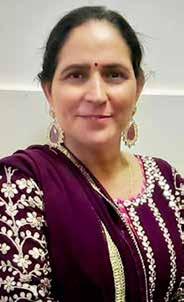
aYbtsPorz
(gurdIp isMG gryvfl) kYnyzf dy ibRitsL kolMbIaf sUby dy sLihr skfimsL ivKy qkrIbn
ZfeI sfl pihlF vfpry
hfdsy ‘c
44 sflf
pMjfbx gurpRIq kOr sMGf dI jfn lYx vfly
jOhn isrnOs ny Kqrnfk qy glq zrfeIivMg krky iksy dI jfn lYx df dosL nfrQ
vYnkUvr dI sUbfeI adflq ‘c svIkfr kr
ilaf hY. Gtnf 2 sqMbr 2022 dI hY jdoN
gurpRIq kOr sMGf afpxI kjLn kuljIq kOr nfl skfimsL dI pYmbrtn qy klIvlYNz
aYvinAU dy curwsqy nyVy bws awzy qy bws dI AuzIk kr rhIaF sn qF iewk Porz dy
bykfbU hoey ipwkap trwk ny AunHF nUM twkr
mfr idwqI. gMBIr jLKmI hflq ‘c dovF nUM
hspqfl phuMcfieaf igaf ijwQy 16 sqMbr nUM
gurpRIq kOr sMGf dI mOq ho geI sI. gurpRIq kOr kuJ mhIny pihlF hI vrk primt qy
kYnyzf afeI sI. jOhn isrnOs hfdsy mOky
Gtnf sQfn qoN Prfr ho igaf sI qy puils ny nvMbr 2023 ‘c 6 DfrfvF qihq Aus nUM
igRPqfr kr ilaf sI. jOhn isrnOs nUM 10
jUn nUM sjLf suxfeI jfvygI.
qsvIr : gurpRIq kOr sMGf

aYbtsPorz (gurdIp isMG gryvfl) kYnyzf
dI rfjDfnI Etfvf ivKy sYnyt cYNbrjL ivc
krvfey gey smfgm mOky ibRitsL kolMbIaf
‘c aOrqF dy rogF dI mfihr pMjfbx zfktr
aMjlI mlhoqrf df vkfrI snmfn ‘ikMg
cfrls koronysLn mYzl’ nfl snmfinq kIqf
hY. zf[ aMjlI mlhoqrf nUM ieh snmfn aOrqF
dI svwC ishq bfry kIqIaF sLfndfr syvfvF

aYbtsPorz (gurdIp isMG gryvfl) kYnyzf dy pRDfn mMqrI jsitn trUzo vloN awj jLfrI kIqy gey ibafn ivc ik gvrnr jnrl mYrI sfeImn
ny blqyj isMG iZwloN nUM sYnyt leI ibRitsL kolMbIaf qoN afjLfd qOr ‘qy kYnyzf df sYnytr inXukq kIqf hY. ies qoN ielfvf ims mfrtIn
hIbrt nUM ikAUibk aqy tOz ilAUivsL nUM sskYcvn sUby qoN sYnytr inXukq kIqf hY. kYnyzf dI rfiel kYnyzIan mfAuNitz puils ivc BrqI ho ky pihly dsqfrDfrI iswK puils aiDkfrI vjoN ieiqhfs dy sunihrI pMinaF qy afpxf nF drj krvfAux vfly blqyj isMG iZwloN dI sYnytr vjoN inXukqI BfeIcfry leI bhuq mfx vflI gwl hY. mlysLIaf dy jMmpl blqyj isMG iZwloN 1983 ‘c afpxy mfqf ipqf nfl kYnyzf afey sn. kvFtiln XUnIvristI qoN ikRmnOljI dI izgrI krn AuprMq 1988 ‘c AunHF ny rfiel kYnyzIan mfAuNitz puils ivc BrqI hox leI arjLI idwqI pr dsqfr bMnHI hox krky AunHF nUM puils ‘c BrqI hox leI kfPI sMGrsL krnf ipaf sI. aKIr kYnyzf dy iswK BfeIcfry awgy JukidaF brfien mulronI dI srkfr ny ivroDI iDr sI mnjLUrI nfl puils dy zrYs koz ivc qbdIlI krn df ibl pfs kr idwqf sI qy 1991 ‘c Auh puils ‘c BrqI ho gey.
bdly idwqf igaf hY. ikMg cfrls koronysLn mYzl ieMglYNz dy ikMg cfrls qIjf dI qfj-
posLI mOky isrijaf igaf sI. ikMg cfrls
dI qfjposLI nUM drsfAux vflf ieh pihlf kYnyzIan XfdgfrI mYzl hY. vYnkUvr dI
XUnIvristI afP ibRitsL kolMbIaf qy XUnIvristI afP mYnItobf ivKy ivmYn‘jL hYlQ
rYjLIzYNsI pRogrfm dI sih sMsQfpk zf[ aMjlI mlhoqrf Pst nysLnjL hYlQ aQfrtI ‘c ivmYn hYlQ dI mYzIkl aPsr vjoN syvfvF inBf rhI hY. nfrQ amrIkn mInopfjL susfietI dI aYjUkysLn kmytI dI mYNbr zf[ aMjlI mlhoqrf kYnyzIan PfAUNzysLn Pfr ivmYn hYlQ dI cyarprsn rih cuwkI hY.













aYbtsPorz ivWc sfzy nfl mulfkq kro! bIj aqy bIj sLurU krn leI, pflqU jfnvrF df Bojn, trIt, iKzOxy aq aYksYsrIjL y, poltrI, GoVy aqy psLU PIz. vfeIlz brz PIz aqy aYksYsrIjL, igPtvyar, kwpVy aqy juWqy, lfan aqy gfrzn splfeI aqy hor bhuq kuJ….


vIgn gmI afeI ivtfmn





ivkrI: 50% dI Cot inXmq[ $29[95/60 gwmI df ÈIÈI hux $14[98
hfeIpoklors vfeIps blyPyrfeIits, rosysIaf, suwkI awK, muhfsy aqy awKF aqy cmVI dIaF hor siQqIaF ivwc mdd krn leI sfry kudrqI ÈfkfhfrI Auqpfd.
ivkrI:










oracleproper tygroup.com



















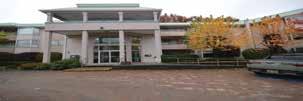
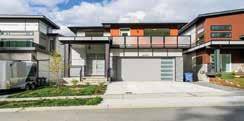

































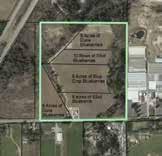















It’s a fact! Most people with watery or burning eyes don’t suspect they may have dry eye disease, also called dry eye syndrome. After all, it feels like their eyes are too wet, not too dry! So how could watery, burning eyes be dry?
Healthy eyes produce comforting, lubricating tears all the time. Additionally, more watery tears might form sometimes to clear out debris or comfort a temporary irritation. But if the irritation persists, you may say it “feels like something in my eye”. Very irritating. Besides stinging, wet, burning eyes, other symptoms of dry eye include:
• Discomfort wearing contact lenses
• “Scratchy” eyes
• Mucus in or near eyes
• Irritation and excessive tearing
• Blurred vision / eye fatigue
• Sensitivity to light
• Redness
• Difficulty driving at night
Staring at our phones and screens has all of us blinking much less frequently, which can definitely get our eyes burning and may lead to permanent injury. At other times, dry eye can be caused by allergies, chemicals, or wind. Even using the wrong makeup can cause dry eye. In many cases, there are internal changes in the body that lead to dry eye.
People of all ages and stages of life can suffer from dry eye, including children. Here are other additional
factors:
• Over age 50 (tear production lessens with age)
• Had cataract or laser surgery
• A woman (lack of tears can occur during hormonal changes linked to pregnancy, birth control, or menopause)
• Eating a diet low in vitamin A (found in liver, carrots, broccoli) or low in omega-3 fatty acids
• Wearing contact lenses
• Taking certain medications or undergoing chemotherapy
These can all result in chronically dry, watering, irritated, and burning eyes.
The good news is that no matter which specific cause, dry eye can be successfully managed with
professional preservative-free products, such as BioDrop MD lubricating eye drops, eye supplements such as FitEyez Vegan Gummies and a good, heated eye mask, such as the OcuSci Hot/Cold compress (sometimes cold feels better). ALWAYS MAKE SURE YOU USE EYE DROPS WITH NO PRESERVATIVES! Look for the words “PRESERVATIVE-FREE” on the box and label.
Turn to page 18 for info on an eye health company based in Abbotsford that supplies to eye clinics across Canada.
suwkI awK dI ibmfrI suwkI jF pfxI vflIaF awKF ho skdI hY
ieh iewk qwQ hY! pfxI vflIaF jF jlx
vflIaF awKF vfly iËafdfqr lokF nUM Èwk nhIN huMdf ik AuhnF nUM suwkI awKF dI ibmfrI ho skdI hY, ijsnUM zrfeI afeI isMzrom vI ikhf jFdf hY. afÉrkfr, ieh mihsUs huMdf hY ik AunHF dIaF awKF bhuq igwlIaF hn, nf bhuq suwkIaF! qF pfxI BrIaF awKF suwkIaF ikvyN ho skdIaF hn?
ishqmMd awKF hr smyN afrfmdfiek, lubrIkyt hMJU pYdf krdIaF hn. ies qoN ielfvf, mlby nUM sfÌ krn jF asQfeI jlx nUM idlfsf dyx leI keI vfr iËafdf pfxI vfly hMJU bx skdy hn. pr jy jlx bxI rihMdI hY, qF qusIN kih skdy ho ik ieh "myrI awK ivwc kuJ mihsUs huMdf hY". bhuq pryÈfn zMgx, igwlIaF, jlx vflIaF awKF qoN ielfvf, suwkI awK dy hor lwCxF ivwc Èfml hn:
kFtYkt lYNs pihnx ivwc byarfmI
•"KurcIaF" awKF
• awKF dy aMdr jF nyVy blÊm
• icVicVfpn aqy bhuq iËafdf Ptxf
• DuMdlI nËr / awKF dI Qkfvt
• roÈnI pRqI sMvydnÈIlqf
• lflI
• rfq nUM gwzI clfAux ivwc muÈkl afpxy ÌonF aqy skrInF vwl dyKx nfl asIN sfry bhuq Gwt vfr-vfr Jpkdy hF, jo XkInI qOr 'qy sfzIaF awKF nUM jlx aqy sQfeI swt df kfrn bx skdf hY. hor simaF 'qy, suwkI awK aYlrjI, rsfiexF jF hvf kfrn ho skdI hY. glq mykawp dI vrqoN krn nfl vI awKF KuÈk ho skdIaF hn. bhuq sfry mfmilaF ivwc, srIr ivwc aMdrUnI qbdIlIaF huMdIaF hn ijs nfl awKF KuÈk ho jFdIaF hn.
hr Aumr aqy jIvn dy pVfvF dy lok KuÈk awKF qoN pIVq ho skdy hn, bwicaF smyq. iewQy hor vfDU hn
kfrk:
• 50 sfl qoN vwD Aumr (Aumr dy nfl awQrU Auqpfdn Gtdf hY)
• moqIafibMd jF lyËr srjrI hoeI sI
• iewk aOrq (grB avsQf, jnm inXMqrx, jF mInopOË nfl sMbMiDq hfrmonl qbdIlIaF dOrfn hMJUaF dI kmI ho skdI hY)
• ivtfimn ey (ijgr, gfjr, brOklI ivwc pfieaf jFdf hY) jF Emygf -3 PYtI aYisz dI Gwt mfqrf ivwc Bojn Kfxf
• kFtYkt lYNs pihnxf

• kuJ dvfeIaF lYxf jF kImoQYrypI krvfAuxf
ieh sB lMby smyN qoN suwky, pfxI Brn, icVicVy aqy jlx vflIaF awKF dy nqIjy vjoN ho skdy hn.
cMgI Ébr ieh hY ik BfvyN koeI vI Kfs kfrn hovy, suwkI awK nUM pRoPYÈnl pRIËrvyitv-mukq AuqpfdF, ijvyN ik BioDrop MD afeI zROp, awKF dy
pUrk ijvyN FitEyez Vegan Gumimes aqy iewk cMgf, grm afeI mfsk, ijvyN ik OcuSci Hot/Cold kMprYws (keI vfr TMzf ibhqr mihsUs huMdf hY) nfl sPlqfpUrvk pRbMDn kIqf jf skdf hY. hmyÈf XkInI bxfE ik qusIN ibnF iksy surwiKaf dy afeI zROp dI vrqoN krdy ho! bfks aqy lybl 'qy "pRIËrvyitv PRI" ÈbdF nUM dyKo. aYbtsPorz siQq awKF dI ishq kMpnI bfry jfxkfrI leI pMnf 18 'qy jfE jo kYnyzf Br ivwc awKF dy klIinkF nUM splfeI krdI hY.

By Debnath Shaw
Technology is an important factor for global development. Development is a core issue for the Global South, many of whose members are being left behind in achieving their Sustainable Development Goals (SDGs). The key factors behind this unequal state of affairs are technology, finance and information. Thomas Friedman has argued, that the era of globalisation has been characterized by democratization of technology, finance and information (The World is Flat, 2004). However, with the pace of globalization slowing down, particularly since the Covid pandemic, democratization of technology too has taken a hit.
Democratization of technology refers to the process by which access to technology progressively become more easily available to more people at reasonable cost. Historically, the printing press is the earliest recorded instance of technology opening new frontiers of knowledge dissemination, leading to empowerment of a greater number of people. Since the mid-1990s, the internet has been the prime vehicle of universal democratization of knowledge and information.
The effects of democratization of technology have been dramatic, more so with digitization. New technologies and improved user experiences have empowered those outside of the technology industry to access and use technological products and services. In India, think - UPI, mobile banking WhatsApp, X, etc, - tools being used regularly by the country’s 900 million mobile phones users, mostly connected to the internet, including
a vast user base in rural areas. The ‘open source’ model allows users to participate directly in development of software. Upgrades in communication technology have made the globe more interconnected than ever.
Democratization of technology has helped ‘the last person in the queue’ to access public services with ease and reduced corruption, get timely access to relief when hit by natural disasters, and useful and reliable information allowing meaningful participation in the democratic process. It has made markets more broad-based and diversified and consumers are able to use complex technological products without the guidance of qualified professionals. Such job categories have taken a hit, a situation whose downward spiral is being perpetrated by developments in artificial intelligence and machine learning technology.
However, we should not lose sight of the challenges faced by democratization of technology, which is hampered by the slow pace of digitization and infrastructure gaps, particularly in developing countries. Gender and social inequities restricting access to and use of technology, and the data divide, too needs to be addressed. Cyber security and data privacy concerns are felt at all levels. What is comforting is that both governments and technology-driven companies are addressing these concerns, while moving ahead with their programmes to harness technology for the benefit of the masses.
In India, the democratization of technology is manifested in some remark-
able programmes which have changed the lives of millions. The prime example is the Digital Public Infrastructure (DPI), part of the ‘India Stack’, which operates digital identification, payments and data management. The Common Service Centres (CSC) are the access points for delivery of government to citizen (G2C) e-services, within reach of citizens by creating nation-wide physical service delivery ICT infrastructure. The Namo Drone Didi initiative has many goals, including addressing gender inequality issues, empowerment and pride among women, modernization of agricultural practices, and substantial income to the rural women folk. The two hundred thousand Aayushman Aarogya Mandirs in India’s villages directly connect health centres with the best hospitals and modern technology, bringing professional medical expertise and services, largely concentrated in urban areas, to rural India. The India AI Mission or ‘AI for All’ is aimed at the democratization of the benefits of AI across all strata of society.
A key issue, particularly for the Global South, which has been pursued vigourously by India, is the growing gap between developed and developing countries in the access and endogenous production and development of climate technologies. This has been a key constraint on collective progress in global efforts to achieve sustainable development and effective climate action under UNFCC and the Paris Agreement. Developing countries view technology transfer and capacity building as the key to reducing the
technology and wealth gap. Both climate mitigation and adaption require huge funding transfers from developed countries as per past commitments. Unfortunately, even at COP29 in Baku last year, the level of funding pledged was nowhere near the level required to achieve set goals. There have been repeated calls for enhanced international cooperation arrangements, through reform of existing WTO mandated trade rules, to permit developing countries to protect emerging green industries through tariffs, subsidies and public procurement.
The ray of hope in the horizon is that industries driven by frontier technologies like blockchain, drones, gene editing, nano technology, electric vehicles, solar and wind energy and green hydrogen could create a market of over $ 9.5 billion by 2030 (UNCTAD estimate). Some developing and emerging economies like India have made important policy changes to seize some of the opportunities in these sectors. It is hoped that with increasing democratization of technology and effective partnership between developed and developing countries, mankind’s development goals will be reached sooner than later.
Debnath Shaw, (IFS 1984, Retd.), former High Commissioner to Tanzania and Ambassador to Azerbaijan. Served in Indian Missions in Hong Kong, Beijing (twice), Bonn and Dhaka and at Headquarters in various positions. Seconded to Ministry of Defence as JS (PIC) 2005-07. Visiting Fellow at CSIS, Washington DC 2004-05.
bwicaF ivwc sihxÈIlqf aqy afdrÈF
dIaF kdrF-kImqF pYdf krn dI loV hY. Gr aqy skUl dovF ivwc AuhnF nfl Kuwly sMcfr nUM AuqÈfihq krnf mhwqvpUrn hY. gwl krnI ËrUrI hY, pr loV pYx ‘qy idaflU hoxf vI ËrUrI hY. ijMnf ho sky afpxy bwcy nUM afpxy kMm ivc Èfml krn dI koiÈÈ kro. AunF vwl iDafn idE qy AuhnF
dIaF mnpsMd gqIivDIaF ivc Èfml hovo; ies nfl quhfzy dohF ivckfr nyVqf vDygI. bwcy kudrqI qOr ‘qy afpxy mfipaF df iDafn aqy pRvfngI cfhuMdy hn, ies leI smJdfr mfpy afpxy bwicaF nUM vwKvwK qrIikaF nfl smrQn krn leI ies dI vrqoN krdy hn. anuÈfsn df arQ hY isKfAuxf qy iswKxf. quhfzy bwicaF nUM ieh smJx ivc mdd krn leI ik AunF nUM kI
jfxn dI loV hY aqy loV pYx ‘qy AunF dy ivvhfr nUM TIk krn leI, quhfnUM AuhnF nfl ies qrIky nfl gwl krn dI loV hY ik Auh siqkfr aqy smJdy hn. pUrf smF ibqfE
bwicaF nfl pUrf smF nf ibqfAuxf aqy AunHF dIaF cIËF nUM nËraMdfË krnf AunHF nUM bhuq iËafdf qxfa ivc pf skdf hY. AunHF nfl gwl krn qoN pihlF AunHF ‘qy cIkxf jF AunHF ‘qy doÈ lgfAuxf AunHF dy qxfa nUM vDfAuNdf hY aqy AunHF nUM afpxy aËIËF nfl nfrfË vI kr skdf hY. AunHF dy cMgy aqy mfVy dohF guxF nUM nËraMdfË krn nfl AudfsI dIaF BfvnfvF pYdf ho skdIaF hn. nfl hI, AuhnF nUM dUjy bwicaF nfl GuMmx nf dyxf jF mfVy gRyzF
leI aiDafpkF duafrf aflocnf nf krnf
AuhnF nUM iewk hnyry sQfn ivwc Byj skdf
hY. aÌsos dI gwl hY ik kuJ bwcy ienHF dbfa kfrn ÉudkuÈI krn bfry vI socdy

afpxy bwicaF dy aslI sMgI bxn mfpy
hn. ieh gwl sfzy bwicaF nfl gwlbfq
dOrfn sfhmxy afeI, ijnHF ny afpxy
mfipaF nfl juVIaF keI smwisafvF
sFJIaF kIqIaF. asIN AuhnF dy pirvfrF nfl vI gwl kIqI aqy pfieaf ik iehnF
ivwcoN bhuq sfry bwcy iewkly mfipaF dy GrF
qoN afAuNdy hn. vwzy pirvfrF dy bhuq sfry bwcy nhIN sn, pr ijnHF df sMcfr ibhqr sI, Kfs krky dfdf-dfdI nfl. mfpy
aksr afpxy bwicaF qoN sMpUrx ivvhfr
dI AumId rwKdy hn, jo dbfa vDfAuNdf
hY. hflFik bwicaF leI skRIn smF sImq
krnf cMgf hY, pr mfipaF nUM afpxy Ìon
dI vrqoN nUM kMtrol krn aqy afpxy
bwicaF leI vI smF kwZx dI loV huMdI hY.
ieh ivÈyÈ qOr ‘qy pRIiKaf dI imafd dy
dOrfn mhwqvpUrn hY[ sfzI crcf dOrfn
bwicaF ny afpxy mfipaF nfl juVy keI
muwidaF df iËkr kIqf. iksy bwcy nUM pUrI
qrHF axizwT krnf lMby smyN ivwc Ausdy
Bfvnfqmk, smfijk aqy socx dy hunr
nUM pRBfivq kr skdf hY. bwcy mihsUs kr
skdy hn ik AunHF dI bhuq kdr nhIN hY
jF koeI vI AunHF nUM ipafr nhIN krdf, ijs nfl AunHF dy svY-mfx nUM Tys phuMc
skdI hY. axizwT kIqf jfxf AuhnF nUM
icMqq aqy Audfs vI bxf skdf hY, aqy kuJ mfmilaF ivwc, ieh gMBIr AudfsI df kfrn vI bx skdf hY. Auh afpxy afp
‘qy jF AunHF lokF ‘qy guwsy ho skdy hn jo
AunHF dI dyKBfl krdy hn, aqy ieh guwsf guwsy jF guwsy dy rUp ivwc bfhr af skdf hY. bwicaF nUM cMgI dosqI bxfAuxI aOKI
lwg skdI hY ikAuNik Auh dUijaF nfl gwlbfq krnf jF imlfAuxf nhIN iswKdy.
Éqrnfk sfbq ho skdY nËr-aMdfË krnf
bwcy smfijk siQqIaF

qoN bcxf ÈurU kr skdy hn, ijs nfl Auh hor vI iekwly mihsUs kr skdy hn. keI vfr, Auh iDafn iKwcx leI kuJ kr skdy hn, BfvyN ieh nkfrfqmk hovy. bwicaF nUM loVINdf iDafn nf dyxf AuhnF dy idmfg dy ivkfs aqy skUl ivc AunF dI kfrguËfrI nUM vI nuksfn phuMcf skdf hY, ikAuNik Auh iswKx leI pRyirq jF AuqÈfihq mihsUs nhIN kr skdy. jdoN bwicaF nUM gwlbfq krn df mOkf nhIN imldf, qF ieh AunF dI BfÈf dy hunr aqy smuwcI socx dI smrwQf nUM hOlI kr skdf hY ikAuNik Auh
mhwqvpUrn iswKx dy plF qoN KuMJ jFdy hn. Auh asurwiKaq atYcmYNt stfeIl dy nfl Kqm ho skdy hn, jo AunF dy BivwK dy sbMDF aqy bflgF vjoN Bfvnfqmk qMdrusqI nUM pRBfvq kr skdy hn. ieh sfrI Bfvnfqmk axgihlI bfad ivc mfnisk ishq smwisafvF dI sMBfvnf nUM vDf skdI hY.
ies leI, sMKyp ivc, iek bwcy nUM nËraMdfË krn nfl bhuq sfrIaF nkfrfqmk BfvnfvF, smfijk tkrfa, ivhfr sMbMDI smwisafvF qy iswKx dIaF smwisafvF ho skdIaF hn. dyKBfl krn vfilaF leI bwicaF vwl iDafn dyxf, AuhnF nUM Auh shfieqf aqy sMcfr dyxf bhuq mhwqvpUrn hY ijsdI AuhnF nUM qMdrusqI nfl vwzy hox leI loV hY. gwl krnI ËrUrI hY, pr loV pYx ‘qy idaflU hoxf vI ËrUrI hY! ijMnf ho sky afpxy bwcy nUM afpxy kMm ivwc Èfml krn dI koiÈÈ kro. AuhnF vwl iDafn idE aqy AuhnF
dIaF mnpsMd gqIivDIaF ivwc Èfml hovo; ies nfl quhfzy dohF ivckfr nyVqf vDygI.
cMgf nhIN sËf dyxf aqy Xfd rwKo, iksy vI iksm dI sËf ijvyN ik mfrnf, ÈrimMdf krnf, alwg-Qlwg krnf, cIkxf, jF iJVkxf koeI-nhIN hY. ieh cIËF quhfzy bwcy nUM nuksfn phuMcf skdIaF hn aqy AunHF dI afqmf nUM Tys phuMcf skdIaF hn. cMgy mfpy afpxy bwicaF nUM ÈbdF aqy qrk dI ÈkqI bfry isKfAuNdy hn, AuhnF nUM iËMmyvfr, idaflU ivakqI bxn ivwc vwzy hox ivwc mdd krdy hn jo qrkÈIl ivvhfr krnf jfxdy hn. pirvfr afpxy bwicaF nUM jo shfieqf pRdfn krdf hY, BfvyN Auh shI hovy jF glq, keI vfr AunHF nUM shI rsqy qoN Btk skdf hY. bwicaF ivwc sihxÈIlqf aqy afdrÈF dIaF kdrFkImqF pYdf krn dI loV hY. Gr aqy skUl dovF ivwc AuhnF nfl Kuwly sMcfr nUM AuqÈfihq krnf mhwqvpUrn hY. ies qoN ielfvf, smyN-smyN ‘qy bwicaF dI mfnisk ishq df mulFkx krnf mhwqvpUrn hY. bwicaF nUM shI mfrg ‘qy cwlx vflf mfhOl bxfAuxf mhwqvpUrn hY, aqy ieh iËMmyvfrI mfipaF aqy aiDafpkF qoN ielfvf smfj aqy srkfr nUM vI Èfiml krn dI hY.
pMjfbI mF bolI sfzI.
Èihd qo imwTI zfhZI.
iksy vI dyÈ ’c rhIey.
pMjfbI ivc suxIey khIey.
gfeIey pMjfbI dy sohly.
rihMdy knyzf ivc hF,
sfzy aMdroN pMjfbI boly, kdy nf Buwlo pMjfbI.
knyzf hY mulÉ ipafrf.
sohxf, suQrf qy inafrf.
eyky df sbk isKfAuNdf.
hr iek dy mn nUM BfAuNdf.
GuMzIaF idlF dIaF Koly.
rihMdy knyzf ivc hF,
sfzy aMdroN pMjfbI boly, kdy nf Buwlo pMjfbI.
bolI pMjfbI isKxI.
gurmuKI ilwpI ilKxI.
izgrI hY vwzI lYxI.
ividaf dI Gft nf rihxI.
igafn vloN nf ho jfeIey poly.

aMqrrfÈtrI mF bolI idhfVy ‘qy kdy nf Buwlo pMjfbI
BfeI hrpfl isMG lwKf
rihMdy knyzf ivwc hF,
sfzy aMdroN pMjfbI boly, kdy nf Buwlo pMjfbI.
nIqI ivc awgy afAuxf.
nIaq df JyV nf pfAuxf.
vwzI cfho pdvI lYxI.
EQy vI swcI kihxI.
hoxf kdy nf kMnF qoN boÜy.
rihMdy knyzf ivc hF,
sfzy aMdroN pMjfbI boly, kdy nf Buwlo pMjfbI.
guxIaF ny Aumr lMGfqI.
ilKx dI hwd mukfqI.
sfzy ibn pVHygf ikhVf. kr lE hux qusIN inbyVf.
ipE dfdy ny KËfny KolHy.
rihMdy knyzf ivc hF,
sfzy aMdroN pMjfbI boly, kdy nf Buwlo pMjfbI.
bfxI siqgurF AucfrI.
gurdfs jI ilK gey sfrI.
vIr isMG ilKgy igafn.
‘nfBf’ df koÈ mhfn.
isMG sBIaF dy bcn amoly.
rihMdy knyzf ivc hF,
sfzy aMdroN pMjfbI boly, kdy nf Buwlo pMjfbI.
pfvn jo Dur kI bfxI.
iswK lYxI aqy isKfAuxI.
sfzf ieiqhfs hY Bfrf.
pVHIey,apnfeIey sfrf.
ibnF kuMjIEN ijMdy kOx Koly. rihMdy kYnyzf ivc hF, sfzy aMdroN pMjfbI boly, kdy nf Buwlo pMjfbI.
mUMhoN jy Buwilaf AUVf. isr Auwqy irhf nf jUVf.
iËwlq sihxI hI pYxI.
kOm dI hoNd nf rihxI.
qfhIENN ikÈqI KFvdI zoly.
rihMdy knyzf ivc hF,
sfzy aMdroN pMjfbI boly, kdy nf Buwlo pMjfbI.
skUl pMjfb ’c Kohly.
pMjfbI qoN rwKx Ehly. pMjfbI qoN sfVf rwKdy.
bol nf ieMgilÈ Qwkdy.
‘mfsI mfn dI’ pMjfbI nUM mDoly.
rihMdy knyzf ivwc hF,
sfzy aMdroN pMjfbI boly, kdy nf Buwlo pMjfbI.
hrpfl isMG CMd bxfqf.
kvIÈrF sohxf gfqf.
TyT pMjfbI bolo.
mF bolI kdy nF roÜo.
rMg lE mjITI coly.
rihMdy knyzf ivc hF,
sfzy aMdroN pMjfbI boly,
kdy nf Buwlo pMjfbI.



Location : Pizza Time Abbotsford , BC V4X 1M3
Salary: 35.00 hourly / 40 hours per Week
Terms of employment - Full time
Schedule: Day, Early Morning, Evening, Morning, Overtime, Shift, Weekend Starts as soon as possible vacancies : 1 vacancy
Experience: 1 year to less than 2 years
Please send your resume to : pizzatime1440031@outlook.com
To ensure rapid permitting and robust regulation of renewable energy projects, the Province will introduce legislation in spring 2025 allowing the regulation of renewable energy projects, such as wind and solar, to move under the authority of the BC Energy Regulator (BCER). Adrian Dix, Minister of Energy and Climate Solutions, made the announcement in the presence of successful First Nations and clean-energy partners who gathered to celebrate the signing of their electricity purchase agreements (EPAs) with BC Hydro, which will generate between $5 billion and $6 billion in private capital spending throughout the province.
The legislation will also enable the BCER to be the primary regulatory authority for authorizations associated with the construction of the North Coast Transmission Line (NCTL) and other high-voltage electricity transmission projects. This will help accelerate the expansion of British Columbia’s electricity grid and meet the demand in growth arising from critical mineral and metal mining, port electrification, hydrogen and fuel processing, and shipping projects under consideration.
“Along with other natural resources projects, these critical projects have been identified by the Province as priorities that are ready to move forward, with the potential to generate significant employment to support our
economy in the face of potential tariffs by the U.S. government,” Dix said. “Now, with electricity purchase agreements signed by all of the wind and solar projects selected in the recent BC Hydro Call for Power and the BC Energy Regulator poised to be regulator for permitting these projects, British Columbia is on a clear trajectory to deliver the clean, affordable and reliable power people and industry need, and meaningfully grow and diversify our economy.”
This announcement builds on the Province's intent to exempt all future wind projects from the environmental assessment process, including the nine wind projects that are now under signed electricity purchase agreements with BC Hydro. It will create a single-window permitting process for renewable energy projects. The BC Energy Regulator will take a staged approach, focusing initially on the North Coast Transmission Line and other prescribed highvoltage transmission lines, and the wind and solar projects.
The new legislation, to be introduced by the Ministry of Energy and Climate Solutions, will extend the BC Energy Regulator’s existing legal authorities and responsibilities to the new development activities relevant to the different energy projects.
The BC Energy Regulator is an experienced organization that has demonstrated expertise at getting projects moving quickly, while providing robust regulatory oversight through the lifecycle of projects. This is a natural evolution of the BC Energy Regulator’s role, which initially focused on oil, gas and geothermal development, then expanded to include hydrogen, ammonia and methanol, and now to renewable energy. The BC Energy Regulator will bring its expertise and capacity to the province’s broader stewardship efforts for water, land and resources.
“The BC Energy Regulator is committed to permitting efficiency and robust regulatory oversight of B.C.’s oil, gas and other energy resources,” said Michelle Carr, commissioner and chief executive officer, BC Energy Regulator. “With our single-window approach to permitting through the full lifecycle of development, commitment to operational excellence and stewardship in the public interest, commitment to First Nation consultation and management of land-owner interests, the BC Energy Regulator is well positioned to apply that expertise to renewables and to support the province’s transition to low-carbon energy.”
The Province is committed to working in cooperation with First Nations partners, and is engaging with Nations across the province on the approach to the proposed legislation.
“Designating the BCER as the single regulator for renewables helps ensure B.C. can meet its growing electricity demand and bring renewable energy projects online sooner,” said Kwatuuma Cole Sayers, executive director, Clean Energy Association of British Columbia. “In the 2024 Call for Power, 11 CEBC members, including First Nations and industry leaders, were selected as successful proponents for both wind and solar projects, demonstrating how meaningful partnerships drive major projects and deliver sustainable energy solutions. An effective regulatory framework must foster investment in these collaborations, uphold Indigenous rights and title, and maintain B.C.’s world-class environmental standards. We look forward to working alongside government, First Nations and industry to shape a clean-energy future that benefits all British Columbians.”
The BC Energy Regulator has a team of more than 300 professionals in seven offices located throughout B.C. Subject-matter experts include biologists, engineers, hydrologists, agrologists, compliance and enforcement officers, First Nations liaison officers, heritage conservation officers and archeologists. The BC Energy Regulator will hire additional staff and subject-matter experts as authorities are added.

myK: rfj drvfr qoN zr, Dn hfnI, krjf isr cVHy, apmfn df zr, sMqfn suK, Xfqrf qoN cot df Kqrf, dsMbr 19, 20, 21, 28, 29, jnvrI 7, 8 asLuB.
ibRK: vfXU rog, acfnk ksLt, afriQk sMkt, afpixaF nfl JgVf, iesqrI ksLt, imwqr imlfp, dsMbr 22, 23, 30, jnvrI 1, 9, 10, 11 asLuB.
imQun: imwqr bMDU suK, ishq TIk, iesqrI qy sMqfn qoN ksLt, mhIny dy aMq ivwc afmdn qoN vwD Krcf, dsMbr 14, 15, 16, 24, 25, jnvrI 2, 3, 4, 12, 13 asLuB.
krk: vfXU rog, Dn lfB, sMqfn hyqU ivsLysL Krc iesqrI suK, kMm bdlI qoN lfB. dsMbr 17, 18, 26, 27, jnvrI 5, 6, 14, 15 asLuB.
isMG: ishq TIk, imwqr bMDU ksLt, iesqrI suK, kfrobfr TIk, kfrobfr TIk,
jLmIn-jfiedfd qoN lfB. dsMbr 19, 20, 21, 28, 29, jnvrI 7, 8 asLuB.
kMinaf: KUn dI KrfbI, BfeI BYxF jF bMDUaF nfl JgVf, iesqrI pwK sLuB, kfrobfr
ivwc qrwkI. dsMbr 22, 23, 30, jnvrI 1, 9, 10, 11 asLuB.
qulf: swt df zr, BfeI jF bMDUaF qoN sihXog, sMqfn qy iesqrI pwK sLuB, kfrobfr
ivwc qrwkI, dsMbr 14, 15, 16, 24, 25, jnvrI 2, 3, 4, 12, 13 asLuB.
ibRsick: srIr ksLt nyqr qy swt df zr, bMDU suK, Dn lfB hovy, mhIny dy aMq ivwc ivsLysL Krc hovy. dsMbr 17, 18, 26, 27, jnvrI 5, 6, 14, 15 asLuB.
Dn: ishq TIk, Dn lfB ho ky vI PjUlKrcI, BrfvF qy imwqrF df sihXog, iesqrI pwKoN icMqf, sQfn bdlI qy kMm bdlI df ivcfr. dsMbr 19, 20, 21, 28, 29, aqy jnvrI I 7, 8 asLuB.
mkr: ishq ivwc gVbV, Dn lfB ho ky PjUl Krc, imwqr bMDU suK, Xfqrf ivwc swt df Kqrf, dsMbr 22, 23, 30, jnvrI 1, 9, 10, 11 asLuB.
kuMB: pyt dI KrfbI, gupq sLwqrU qoN zr, iesqrI pwK qoN lfB, kfrobfr ivwc rukfvt, kMm bdlI df ivcfr. dsMbr 14, 15, 16, 24, 25, jnvrI 2, 3, 4, 12, 13 asLuB.
mIn: ishq ivwc KrfbI, lfB ho ky vI Dn dI hfnI, afpxy lokF nfl JgVf, iesqrI pwK dI icMqf, kfrobfr ivwc gVbVI, mfnisk pRysLfnI hovygI. dsMbr 17, 18, 26, 27, jnvrI 5, 6, 14, 15 asLuB.


Any hectic activity that has just started to You are in a good position to make some final decisions on something you may have first considered late July to mid August. The position of somebody else may be clearer now, particularly if they decide to bring something to an end. If this does happen it can make it easier in some way when it comes to normal routines in life.


Someone else can be very straightforward as to what they either like or expect from you. Be careful you don’t read into this more than is being offered, particularly if there is an expectation for you to take on responsibilities or to put things in place. Make decisions up to late September that will keep you in control of your finances.

Whatever you had to rethink when it comes to putting things in place since mid August will now allow you to be clear of mind to late September when it comes to something that might have been first discussed late July to mid August. You can now make decisions that please you. Don’t be tempted to spend too much though.
You are in an excellent position to be able to make decisions to late September that will take your life forward. You can feel as though you have greater personal choice or some control at last. There might be a second stage to this from January to April next year and for this reason it could be wise to ensure there is some flexibility.

Whatever financial decisions you may have first considered from late July to mid August can now be looked at more thoroughly, especially in relation to the best actions to take to be able to move forward. You need to be able to satisfy your own priorities, which may not necessarily fit in with the expectations of somebody else.

You are in a good position to come to realisations regarding any situations where you might feel as though you are taking on more than is reasonable on a regular basis. This is more about making decisions to bring matters to an end where commitments attached will have an inhibiting effect on possible future accomplishments.

Focus on anything you are determined to develop more for your own independence in the future. You can realise that contemplation alone will not move things forward. From now to early September you need to look at the commitments that would need to be taken on. Doing this in stages will help you to get used to the changes.

You could come to the realisation, from now to late September, that it is better to scale down ideas you might have had late July to mid August to be able to take these things into the future successfully. Others might have bigger ambitions but you can be happier with small steps, allowing you to have a feeling of better control.

Having absolute confidence about how you stand on any matter will engender respect from others, even though they may not fully agree with you. This could result in clarity when it comes to commitment and support, which may have been an issue from late July to mid August and was left hanging. Be mindful of the obligations you take on.

Something you thought had become evident since mid August where someone else’s decision making is concerned could again become more unknown to late September. It could be that they need to withdraw to make final decisions. These could involve taking your priorities into account as well as generating some sort of pleasure in life.
You are in a position to late September to contemplate future plans and possibilities that you may have wanted from late July to mid August but could not finalise. You have the opportunity to engage with others and get a response. This could also have a lot to do with leaving the past behind up to 20th November so you can move on with a new life direction.

Something that wasn’t made perfectly clear or finalised by somebody else between late July and mid August can now return to late September where final decisions need to be made by them. It can be up to you to ensure they do not avoid responsibilities that could leave you with too much to get properly organised or put into place.

The Toyota Tacoma is Canada’s bestselling model in the midsize truck segment. And it is not hard to see why, as always offering an excellent combination of good looks, performance, reliability, and good resale. For 2025, the Toyota Tacoma Trailhunter Hybrid is a new addition to the line up. This is a more adventure themed version of the beloved truck and takes its cues and amplifies them from the awesome Toyota TRD Pro trim lineup. Do note, while the Base Tacoma HEV is priced at $63,390 – the Trailhunter version as tested adds a whopping $19,016 worth of options (Final price - $85,016 including freight and PDI).
First off is the lifted suspension – 51 mm (2.0 in) up front, 38 mm (1.5 in) in the back – and Goodyear Wrangler Territory all-terrain tires with exclusive- neat -looking bronze finished wheels. Also added are flared wheel arch fenders, pro- grade underbody rock sliders, heavy duty ARB steel bumpers and tow-points front and rear. The Trailhunter also has after market Rigid accessory and fog lights that can be alternated to clear and amber.
Emphasizing its adventure ready lifestyle chops, there is also an onboard air compressor to inflate tires or accessories. A high-mounted air intake along the passenger-side B-pillar adds to the no-nonsense macho looks substantially. It is one impressive looking truck for sure.
Review by Veeno Dwan.
In terms of powertrains, the previous turbo V6 is now replaced by a hybrid version of this powertrain, as standard on the Trailhunter. This new unit still pumps out 278 horsepower and combined with hybrid 48-hp electric motor makes up an impressive 326 horses. The nickel–metal hydride (NiMH) battery has a capacity of 1.87 kWh and is self charging. Torque is main thing here with a gobsmacking 200 lb-ft increase to 465 hp. The transmission is an eight-speed automatic transmission with a low-range transfer case and selectable four-wheel drive. the Trailhunter’s tow rating of 2,699 kg (5,950 lb). , Meanwhile, the Trailhunter’s payload is rated at 710 kg (1,565 lb) in the six-foot long pickup bed.
Inside, the cabin has such details as unique yellow seat piping and the Toyota branding. and a neat removable speaker integrated into the dash. Inside, there’s heated and ventilated seats, a heated steering wheel, and dual-zone climate control. The rear seat and pickup bed both have AC outlets. Major improvements in the cabin as far as I could tell was the better, more relaxed driving position and slightly bigger rear seats. Standard Interior features include Voice Activated Audio and Phone systems, Apple Carplay, Android, USB, and Bluetooth connectivity. Inside, there is a neat, simple designs, but the cabin does look very durable and well finished. Simple logical controls have glove friendly large dials for the climate controls.

Safety is high with the latest Toyota’s Safety Suite as standard equipment, For serious trail “hunters” there is the clever Proactive Driving Assist (PDA) system with the forward-facing camera and radar sensors and predictive braking and steering input for navigating off- road conditions.
One benefit of the new powertrain is the 2025 Tacoma Hybrid’s slightly better fuel ratings of 10.5 L/100 km in the city, 9.9 on the highway, and 10.3 combined. On the road, the first thing you notice is the tremendous torque surge thanks to the new hybrid powertrain engine. Low end power is quick to materialize in acceleration, despite a substantial weight penalty of 300 kg compared to the older model. The Tacoma is an easy to drive, satisfying truck. Yes there is some truck rumble and the harsher steering feedback, but that is too be expected really. In contrast the Tacoma excels on rough trails and gravel. Four-wheel drive and the multi-mode function adjusts for different terrain such as loose rocks, snow,
or mud. Steering only becomes chore in tight parking lots thanks to the sixfoot pickup bed. Complaints are few, but exist, there is no short bed option and radio tuning is a chore. Also, the noise from the front pillar noise might be annoying to some – but not the hard core off-roaders I am sure!
To sum up, the Tacoma Trailhunter is a whole lot of truck with the expensive options equipment as standard, but then again it has all the high-performance adventure and off- road toys , accessories, and add-ons you could want. But just as importantly it i all factory fitted and warranted by Toyota. The Trailhunter is great step up from the TRD Pro version of the Tacoma and will not disappoint. A great truck for serious work and more than serious play! BEST N CLASS.
2025 Toyota Tacoma hybrid Trail Hunter : priced from $63,390.
Price as tested- $85,06: Including options plus freight and PDI.
WEBSITE: Toyota.ca


It is with heavy hearts that we announce the passing of Balwinder Singh Aulakh. We invite family and friends to join us in honoring and celebrating his life.

Date: Saturday, February 15th
Time: 10:00 AM
Location: Springfield Funeral Home 2020 Springfield Rd, Kelowna, BC V1Y 5V8
Antim Aardas at Gurdwara Guru

Amardas Darbar Sikh Society at 12pm. 220 Davie Rd, Kelowna

bhuq hI duKI ihrdy nfl sUicq kIqf jFdf hY ik sfzy ipafry blivMdr isMG aOlK jo ipCly idnI akfl clfxf kr gey sn AuhnF dy sskfr qy Bog df vyrvf hyT ilKy anusfr hY
imqI: ÈnIvfr, PrvrI 15 smF: svyry 10:00 vjy
sQfn: spirMgPIlz iPAUnrl hom 2020 sipRMgPIlz roz, kYlonf, bIsI V1Y 5V8

aMqm ardfs gurduafrf gurU amrdfs drbfr iswK susfietI ivKy dupihr 12 vjy. 220 zyvI roz, kYlonf



Oct 7, 1938 - Feb 9, 2025 of pind karyal
Saturday February 15, 2025
Funeral Service
Fraser River Funeral Home
2061 Riverside road
Abbotsford, BC at 9:30 AM
Bhog of Shri Sehaj Path & Antim Ardaas
Khalsa Diwan Society Abbotsford
33094 South Fraser way
Abbotsford, BC at 12:00 PM
In Grief
Baltej Singh Gill : 604-825-8570
Jagroop Singh Gill : 604-751- 3116

Your presence, support, and shared memories would mean so much to us during this difficult time. Kindly share this with those who may wish to attend.
Roop Singh Gill : 604-825-1648

ÈnIvfr 15 PrvrI, 2025 aMiqm-sMskfr syvf PryËr irvr iPAUnrl hom 2061 irvrsfeIz roz aYbtsPorz, bI[sI svyry 9:30 vjy
ÈRI sihj pfT dy Bog aqy aMqm ardfs Kflsf dIvfn susfietI aYbtsPorz 33094 dwKxI PryËr vya aYbtsPorz, bI[sI dupihr 12:00 vjy
sog ivc
blqyj isMG igwl : 604-825-8570
jgrUp isMG igwl : 604-751-3116
rUp isMG igwl : 604-825-1648


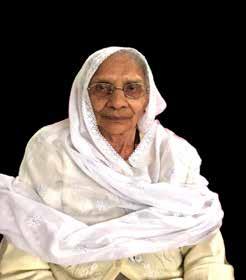
Pind Dhandian
March 13, 1924 - February 8, 2025
Beloved wife, mother and grandmother
February 16, 2025 at 12pm
Fraser River Funeral Home
2061 Riverside Rd
Abbotsford, BC V2S 6A5
Sehaj Path Bhog
Gurdwara Baba Banda Singh Bahadar
604-300-0429
604-832-6825




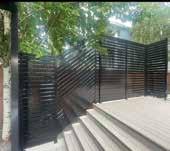
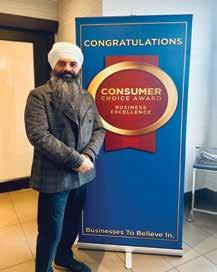



kMm vfly vrkrF dI loV hY.






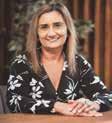
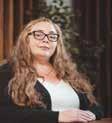


ALG Lawyers was founded by Jasdeep Aujla. ALG established its roots in Abbotsford and now provides legal services and has lawyers across the Lower Mainland and Fraser Valley, with offices in Surrey and Vancouver. Jas has been acknowledged and has the distinction of being the first South Asian from the city of Abbotsford to play CIS football at UBC. On account of pioneering that achievement, he continues to ensure that ALG is involved in local sports organizations amongst other local community initiatives. Most recently, Jas and other lawyers at ALG were asked to assist in helping to bring the 55+ BC Summer Games to Abbotsford.